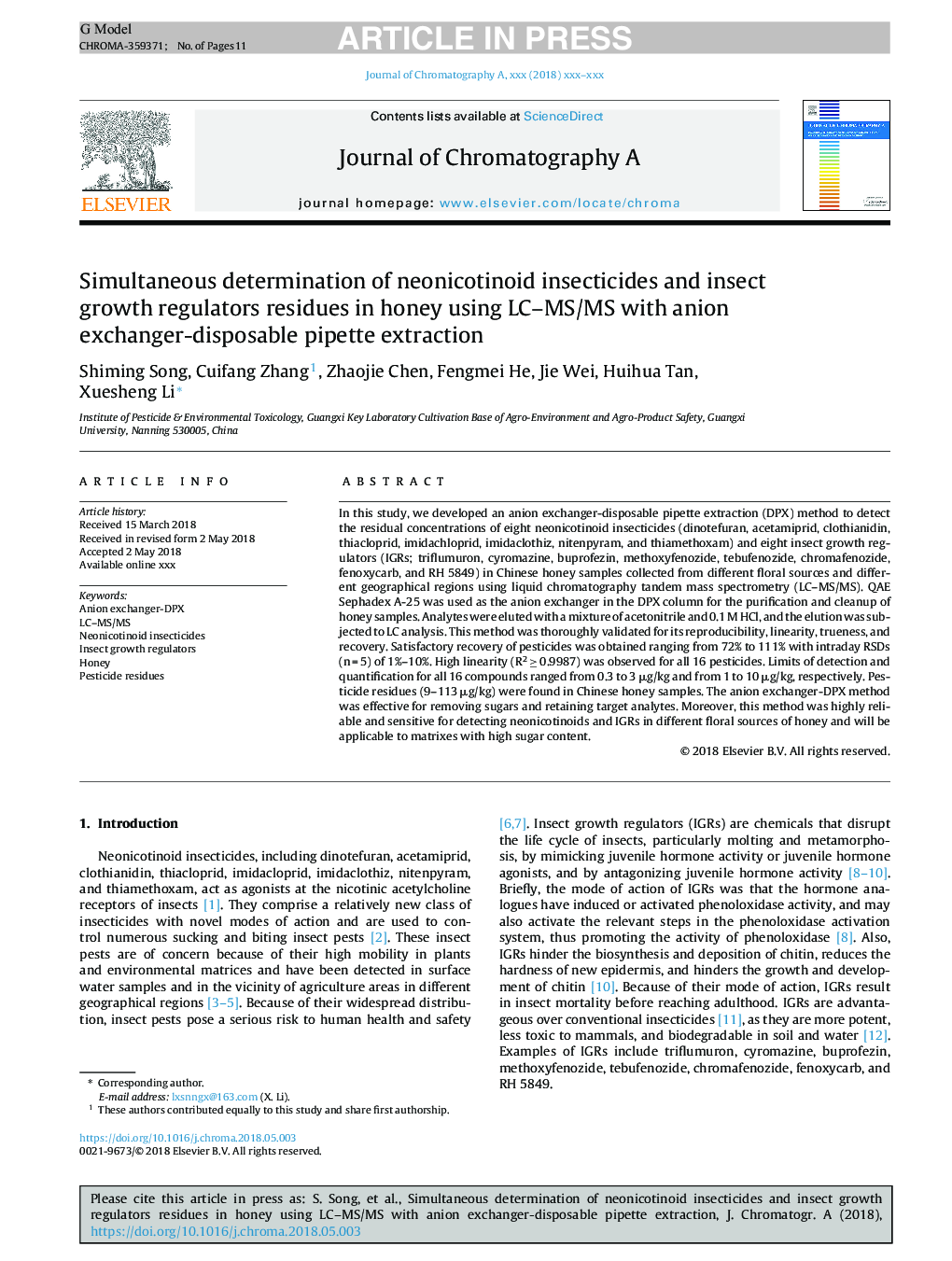| Article ID | Journal | Published Year | Pages | File Type |
|---|---|---|---|---|
| 7607963 | Journal of Chromatography A | 2018 | 11 Pages |
Abstract
In this study, we developed an anion exchanger-disposable pipette extraction (DPX) method to detect the residual concentrations of eight neonicotinoid insecticides (dinotefuran, acetamiprid, clothianidin, thiacloprid, imidachloprid, imidaclothiz, nitenpyram, and thiamethoxam) and eight insect growth regulators (IGRs; triflumuron, cyromazine, buprofezin, methoxyfenozide, tebufenozide, chromafenozide, fenoxycarb, and RH 5849) in Chinese honey samples collected from different floral sources and different geographical regions using liquid chromatography tandem mass spectrometry (LC-MS/MS). QAE Sephadex A-25 was used as the anion exchanger in the DPX column for the purification and cleanup of honey samples. Analytes were eluted with a mixture of acetonitrile and 0.1â¯M HCl, and the elution was subjected to LC analysis. This method was thoroughly validated for its reproducibility, linearity, trueness, and recovery. Satisfactory recovery of pesticides was obtained ranging from 72% to 111% with intraday RSDs (nâ¯=â¯5) of 1%-10%. High linearity (R2â¯â¥â¯0.9987) was observed for all 16 pesticides. Limits of detection and quantification for all 16 compounds ranged from 0.3 to 3â¯Î¼g/kg and from 1 to 10â¯Î¼g/kg, respectively. Pesticide residues (9-113â¯Î¼g/kg) were found in Chinese honey samples. The anion exchanger-DPX method was effective for removing sugars and retaining target analytes. Moreover, this method was highly reliable and sensitive for detecting neonicotinoids and IGRs in different floral sources of honey and will be applicable to matrixes with high sugar content.
Related Topics
Physical Sciences and Engineering
Chemistry
Analytical Chemistry
Authors
Shiming Song, Cuifang Zhang, Zhaojie Chen, Fengmei He, Jie Wei, Huihua Tan, Xuesheng Li,
